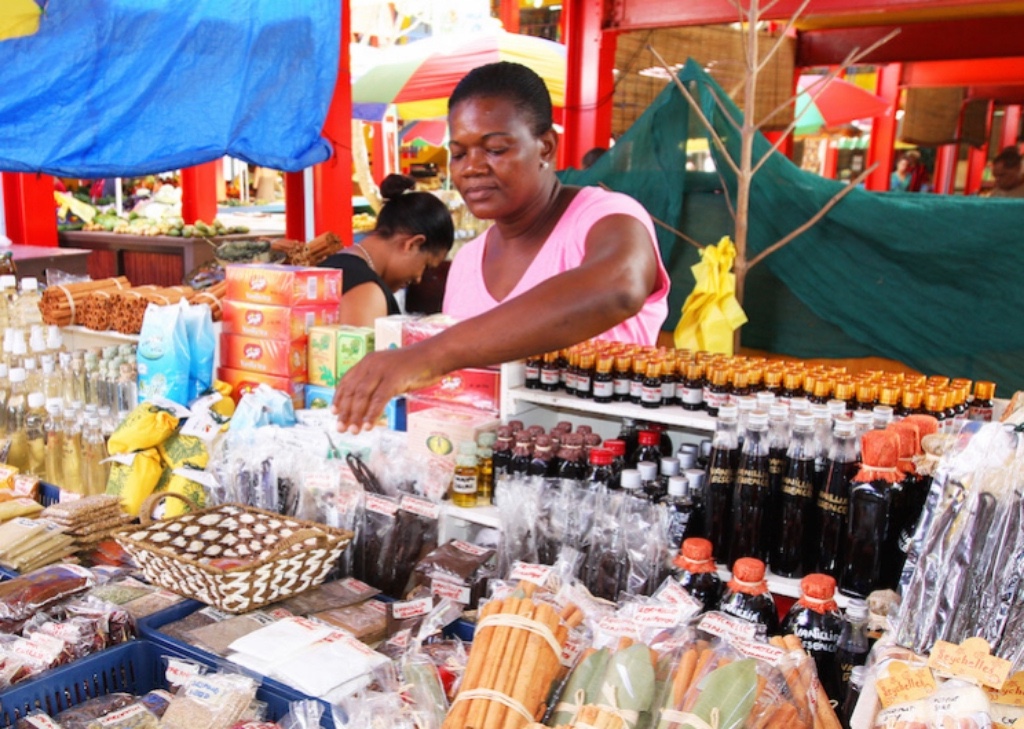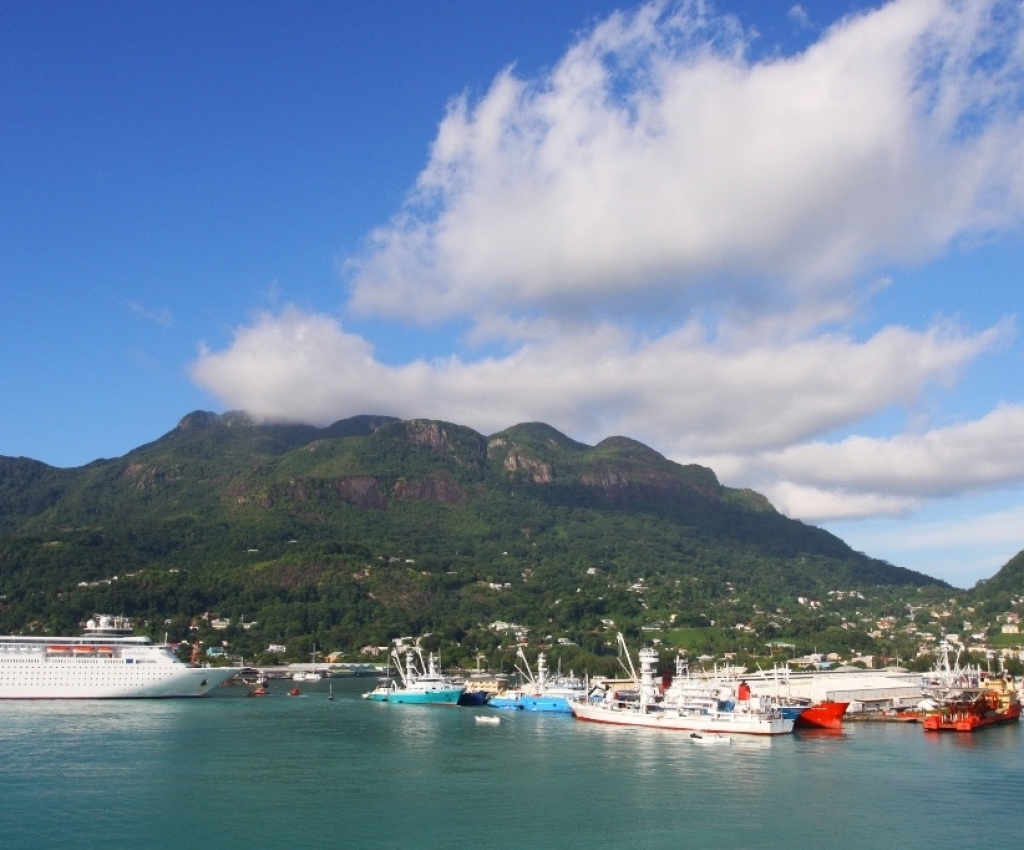4.61°S 55.45°E Dispatch: Seychelles
Weeks have passed without spotting a paved road or any vehicle larger than a motorbike. Boats in harbors and two legs on sandy paths are the primary method of transport for this island world. Finding a large port like Victoria, Mahe, Seychelles, capital comes as a bit of shock. Cargo containers are stacked, unloaded and moved from here to there. Parking next to the Costa Classica, sister ship of the Costa Concordia that collided with a rock, was nerve-racking too. The Italian Costa cruise lines didn’t reassign that errant captain to another ship did they?
Traffic snarls in Victoria; horns honking, taxis, tour buses and a European style circle around the famous silver clock tower seem out of place. Roads are marked ‘In’ and ‘Out’ presumably referring to in and out of town. Construction cranes tower over half-built office buildings and hotels.
Patrons of the color-drenched market continue shopping as they have done for hundreds of years. Sellers trade in a variety of currencies to peddle fruits and vegetables and fresh spices, dried and ground from cinnamon, cardamom, vanilla, and nutmeg plucked from trees in the surrounding area. A food truck’s artwork adds to the riot of color that is Seychellois esthetic.
Victoria is a city, a different planet from the small islands that make up the remaining 2/3 of Seychelles land area. Seabirds of course have it made, but without enough space for landing strips, air transport is unavailable. Islands like La Digue population two-thousand on four square miles depend on inter-island catamarans for transportation. The lively harbor is filled with boats and fishermen unload their catches onto the docks.
Chris who moved to La Digue from Santa Barbara, California to set up a bed and breakfast, declares “Next I’m opening an ice cream shop.”
A fine idea in this heat, we tell him. Getting milk here where there are few cows might be a challenge. Ox-milk ice cream, anyone? Maybe coconut sorbet would work.
Chris struggled to balance on his bicycle and talk on his cell phone to handle a problem with a bike rental. “The locals have a monopoly and don’t like me to rent even to my own guests.” Island life has its complications.
Tourists visit here to see National Geographic’s number one beach at Anse Source d’Argent. Brilliant sand with large rock formations and crashing waves distinguish the beach and La Digue from the atolls that dot the rest of the Indian Ocean.
An ox carts provide transport like a bus system but most walk the main street, chat with neighbors and talk about the heat. It was once against the law to own a car here and still most cars belong to hotels. Two cars cannot pass on the narrow bicycle paths they call roads. Somebody has to go off road into the sand or back up. The only gas station was closed because they’d run out of gas. Fuel for boats is a higher priority than gasoline for cars.
Thankfully Seybrew sold in glass bottles has trucks to move the cases of beer around. Last year Guinness announced it would import cans of the same brew to assure “stocks would not run out.” No doubt an important priority in a place where temperatures range around 90°F and humidity feels the same. Arriving by cargo ship, catamaran, ox cart and truck, a frosty beer is welcome relief.



Comments
‘Just read about your Polar Plunge too. How lucky you two are….and beautiful pics too!